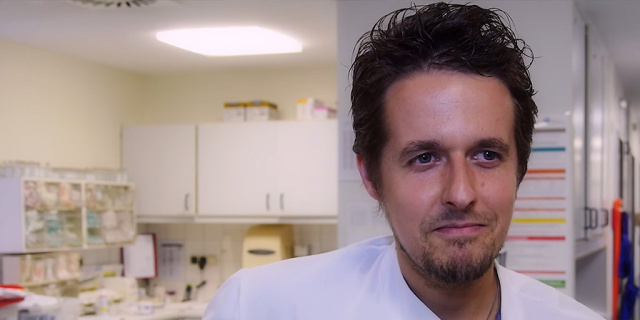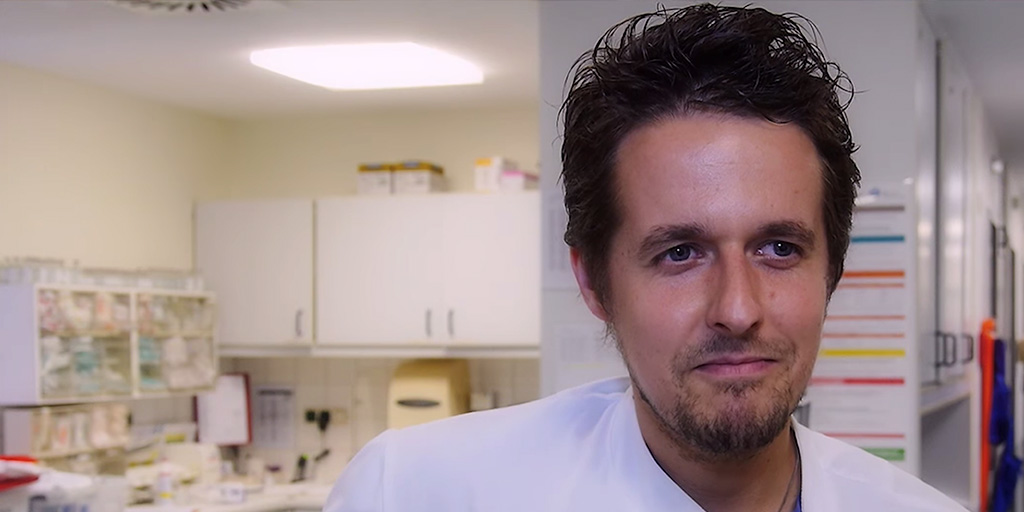

Point-of-care ultrasound (POCUS) has become an established tool for the rapid assessment and diagnosis of patients across a variety of medical disciplines, not least in the high-pressure environment of intensive care medicine.
Dr. Timm Steuber, senior consultant and head of the ICU at Evangelisches Krankenhaus Unna, Germany, discussed his day-to-day use of ICU ultrasound and why he considers POCUS increasingly important. Dr. Steuber started his career as a paramedic before training in medicine and specializing in anesthesia. In his role as a helicopter doctor, he readily recognized the benefits of having POCUS available in emergency situations, and believes its advantages logically extend to ICU.
“Doctors based in either EDs or ICUs are not always able to call specialists from other departments to help with patients, and so clinical staff who know how to use POCUS can be paramount to saving lives,” Dr. Stueber says. He emphasized the importance of ultrasound:
“It is vital that every patient admitted to the ICU routinely has an ultrasound examination because it provides us with such useful clinical information. POCUS is an excellent tool to aid diagnosis and a means to faster therapy; it can help us to reduce the number of potential differential diagnoses to a few possibilities in just a few minutes. We hardly ever use X-rays or CT scans to assess the thorax anymore because, around 90% of the time, we can identify the problem far more quickly using ultrasound. For simple procedures, such as line placement, using ultrasound is especially indispensable and obligatory for the patient; we can clearly localize the needle, reducing the time it takes to position a catheter and drastically reducing the rate of complications despite variations in patients’ individual anatomy. Point-of-care ultrasound is very much a routine tool for us, many of our critical patients have multiple scans a day to monitor their status.”
Dr. Steuber highlighted the importance of a well-designed teaching program:
“Young doctors represent the future of medicine and they are increasingly recognizing how ultrasound improves the quality of patient care in EDs and ICUs. Our training program in Unna is very popular and we are shaping the ultrasound training of our colleagues in other departments of the hospital. Our standard device for teaching is the Sonosite X-Porte system, which has a large screen for demonstrations. It is also very user-friendly, which is extremely beneficial for inexperienced users, allowing them to learn on a system that is intuitive and not overly complex to use. It also has a wipe-clean, easy-to-sterilize surface, which is important for infection control in the ICU. If I come across unusual anatomy or an interesting condition in my daily practice, then I always turn to the X-Porte system to study it in more detail, because of its high definition imaging and larger screen.”
Dr. Steuber also regularly uses a Sonosite iViz system, both in ICU and when on call. He continued:
“The iViz system is more lightweight and compact, which makes it really useful to take on emergency call-outs. I experienced this first hand recently, attending a patient who had collapsed the day after having an operation. Using ultrasound, we immediately found that the right side of his heart was enlarged due to an acute pulmonary thromboembolism caused by a deep vein thrombosis in his leg. Detecting this so quickly—within five minutes—helped us to start targeted treatment immediately and save his right heart function. The outcome might have been very different if the problem had not been identified so quickly, and we had needed to wait for specialist input. We are planning to carry the system in more of our hospital emergency situations, because it gives us easy access to faster diagnosis and treatment.”
Dr. Steuber concluded:
“Our point-of-care ultrasound systems are perfect for everything from echocardiography to central venous puncture. Using them streamlines our workflow, and increases the efficiency of both emergency and ICU departments, as well as a patient’s prognosis.”

